The Aztec Empire thrived in Central Mexico before the arrival of Spanish conquerors. As a civilization, the empire expanded its territory—displaying its military prowess and establishing its reputation as the most powerful and dominant people in the region. Tenochtitlan was its central city and base of power.
Many people ruled the empire, most of them relatives of the Mexica ruler, Tenoch. He was the person who led the Mexicas (original name of the Aztecs) in their journey from Aztlan in 1325 to the island in Lake Texcoco that later became Tenochtitlan after his name.
The Aztecs were quick to establish their authority in the region, and within nearly two centuries, they created the expansive Aztec Empire. Leaders called Huey Tlatoani, or Great Speaker, ruled the empire. While each one led differently, they all contributed to expanding their realm until 1519 when the Spanish conquistadors arrived.
Acamapichtli
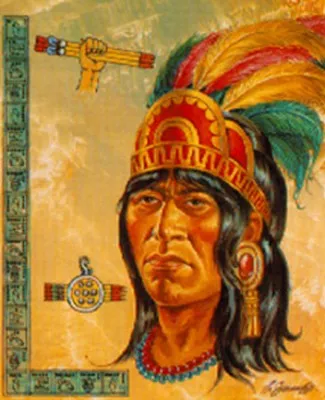
Acamapichtli was the first Huey Tlatoani (great speaker) of Tenochtitlan. Acamapichtli is known for establishing the Aztec state and growing the empire’s wealth and strength. He ruled from 1376 after the death of Tenoch, the founder of Tenochtitlan, the capital city of the Aztec state. His reign ended after his death in 1395.
The first emperor had the advantage of having an Aztec (Mexica) father and a mother who belonged to the Culhuacan nobility. The connection with the aristocracy was vital to the rule of Acamapichtli because the noble family directly descended from the Toltecs.
Although he was married to a princess, it was difficult for Acamapichtli to expand the empire as it was still under the control of their neighbors. However, he made improvements to the city of Tenochtitlan by constructing public buildings and temples and improving agriculture by creating floating gardens called chinampas.
Huitzilihuitl

Acamapichtli’s successor was his son, Huitzilihuitl. He was only 16 years old when the first king died. The priests, warriors, and the principal chiefs of the city elected him as the second emperor. At the start of his reign, they were still paying tributes to the city-state of Azcapotzalco, which the Tepanecs ruled.
He instituted the Royal Council (Tlalocan), comprising four permanent electors as advisers to the new king. He continued his father’s policies and sought alliances with neighboring city-states. As a wise move, he married Ayauhcihuatl, the daughter of a powerful speaker of Azcapotzalco. As the son-in-law of Tezozómoc, he was able to get a reduction of their tribute payments.
The weaving industry in the Aztec state grew during his reign, and their state produced cotton cloth dyed in different colors for other city-states, such as Cuauhnāhuac and Azcapotzalco. He died in 1417.
Chimalpopoca

After the death of Huitzilihuitl, his son Chimalpopoca assumed the throne in 1417 at age 20 and ruled until 1427. In the reigns of the two previous emperors, the city of Tenochtitlan was a tributary of Azcapotzalco. When Chimalpopoca became emperor, his grandfather, Tezozómoc, gifted him Azcapotzalco as a tributary.
Chimalpopoca interceded with his grandfather to allow the displaced prince of Texcoco, Nezahualcoyotl, who was living in the mountains, to live in Tenochtitlan. His grandfather agreed, and the prince went to live in the city under the protection of the third emperor.
In 1426, Chimalpopoca, assisted by Tezozómoc, constructed a new wooden aqueduct from Chapultepec to the capital city. He also built a causeway to Tlacopan, with openings spanned by wooden bridges. To prevent enemies from crossing, they removed them every night. He dedicated a stone for sacrifices in one section of the city. Chimalpopoca was also instrumental in conquering Tequizquiac.
Itzcoatl
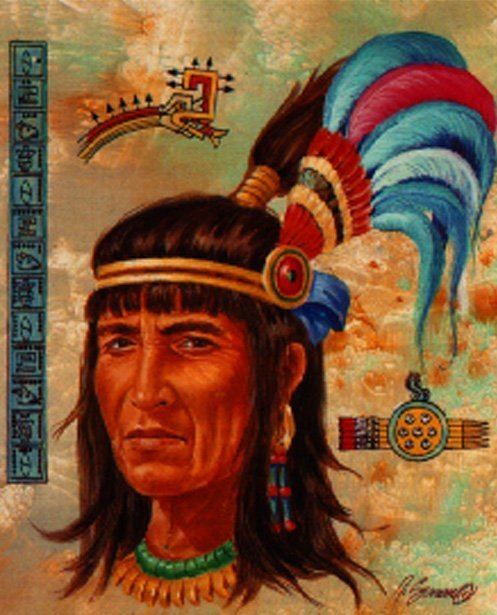
The fourth tlatoani of the Aztec state was Itzcoatl, the son of Acamapichtli and brother of Huitzilihuitl. He assumed the throne in 1427 after the death of his nephew, Chimalpopoca. His reign lasted until 1440. With his leadership, the Aztecs became Mexico Valley’s most powerful society. He spearheaded the formation of the Triple Alliance of Aztecs, Tlacopan, and Texcoco in 1428 to challenge the Tepanec and other rivals. Over time, the alliance overcame the other societies in the valley. Among the three, the Aztecs became the strongest empire, and their capital city, Tenochtitlan, became the region’s center of power.
Aside from their supremacy in warfare, the reign of Itzcoatl saw the growth of the empire and the construction of causeways, public buildings, and new temples. In addition, defeating the neighboring states of Tezompa, Cuitlahuac, Mixquic, and Xochimilco assured fresh water supply to the chinampas to secure their agricultural resources.
Moctezuma I

Moctezuma I, the fifth tlatoani, ascended the throne in 1440 and ruled until 1469. By that time, the Aztec state had grown extensively, making it an empire and him its first emperor. When he was still new to the throne, he strove to strengthen the Triple Alliance. He likewise improved the city by building more aqueducts to supply the city with fresh water. He ordered the construction of a nine-mile-long dike across Lake Texcoco with the help of his cousin, Nezahualcoyotl. It took ten years to build the dam that prevented water from the lake from flooding Tenochtitlan.
He also ordered the construction of the Huitzilopochtli temple, which took two years and thousands of people to build. However, his most memorable contribution to Aztec society was the expansion of their empire outside the Valley of Mexico and into various parts of the Gulf of Mexico.
Axayacatl
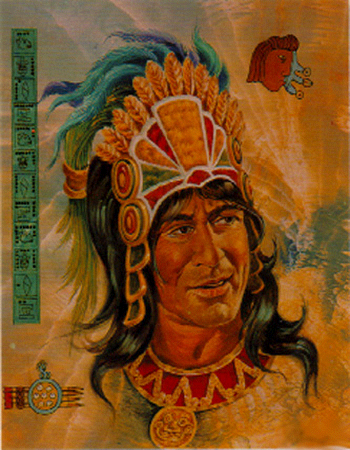
The sixth tlatoani and second Emperor of the Aztec Empire was Axayactl, the grandson of Itzcoatl and Moctezuma I. He displayed his military prowess at a young age. Thus, when Moctezuma I died in 1469, the influential figures in their society chose the 19-year-old as the new leader. It was during his reign that the Aztecs created the massive Sun Stone. His reign lasted only until 1481 due to a lingering illness.
He consolidated his outstanding military reputation by leading successful battles against Tlatelolco in 1473 and Matlatzinca in 1474. He added Malinaldo, Toluca, and other states west of Tenochtitlan to the growing empire. In 1476, he launched a campaign against the Tarascans. They suffered defeat in that battle, which marred his military image deeply because it was the first major defeat of the Aztecs. In that disastrous campaign, only 200 of his contingent of 20,000 survived.
Tizoc
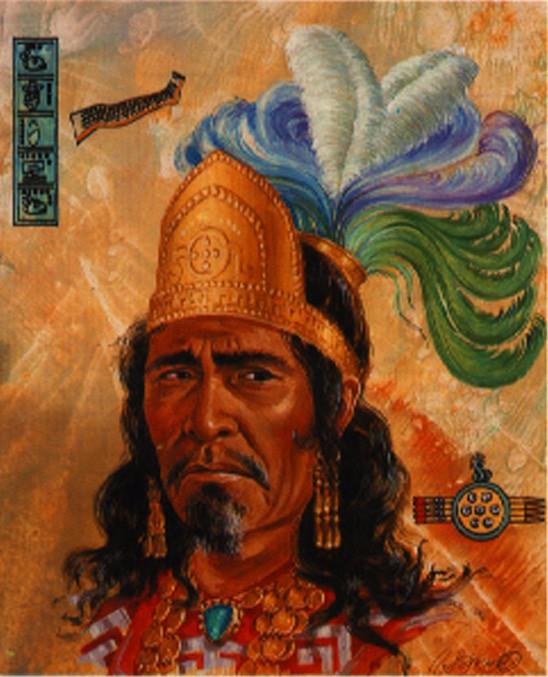
Tizoc became the seventh tlatoani in 1481 after the death of Axayactl and ruled until he died in 1486. His reign was short-lived. He was an older brother of the previous emperor, Axayactl. He started rebuilding the Great Pyramid of Tenochtitlan or the Templo Mayor during his reign. He also suppressed the Matlatzincan people’s rebellion.
Based on Codex Mendoza, 14 cities (Miquetlan, Ecatliquapechco, Tamapachco, Xochiyetla, Mazatlán, Atezcahuacan, Tlappan, Yancuitlan, Tolocan, Tecaxic, Cillán, Ecatepec, Toxico, and Tonalimoquetzayan) were added to the Aztec Empire.
The nobility considered him a poor leader, which may have led to his short reign. Some believed that he died of illness or sorcery, while others thought he was poisoned. Although unclear, some people believed that members of the royal family, or probably Ahuitzotl or Tlacaelel, were responsible for his death.
Ahuitzotl

Tenochtitlan’s eighth Huey Tlatoani was Ahuitzotl, another brother of Axayactl and Tizoc. He ascended to the throne upon the death of Tizoc in 1486 and ruled until 1502.
The empire regarded Ahuitzotl as the greatest military leader. He started with the suppression of the Huastec rebellion and dominated the region by adding more lands to the realm. He was the conqueror of Zapotec and Mixtec and other areas along Mexico’s Pacific Coast. He even reached Guatemala’s western part. Aside from increasing the size of their territory, he undertook a major rebuilding of the capital city. He also expanded the Templo Mayor.
Another achievement credited to Ahuitzotl was the earliest documented record of human-mediated bird introduction into the Valley of Mexico when he introduced the great-tailed grackle into their city.
Moctezuma II
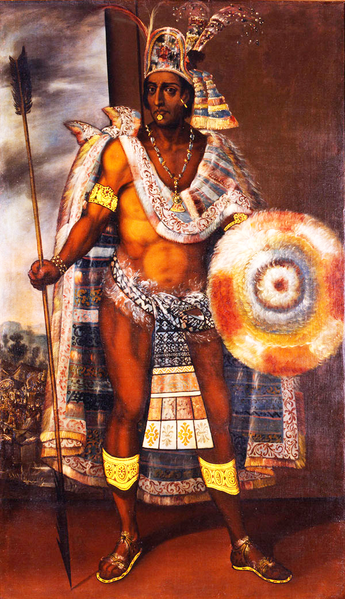
Moctezuma II was the ninth tlatoani who ascended the throne in 1502 or 1503. He ruled the empire for 18 years. He was the first ruler to meet the Spanish conquistadors led by Hernan Cortés. The Aztec Empire reached its greatest size during Moctezuma II’s reign. But he was an elitist and prevented the illegitimate children of nobles from working in the royal palaces or the government. He changed the meritocratic system of social hierarchy. His policies widened the gap between the nobles (pipiltin) and the commoners (macehualtin). Moreover, he required the nobles working in the government to reside permanently in Tenochtitlan.
Because he was an emperor, he did not touch the ground because guards carried him around. He prohibited commoners from looking directly at him. He increased tribute payments, mainly due to the 3-year drought they suffered, which resulted in widespread famine.
Cuauhtemoc
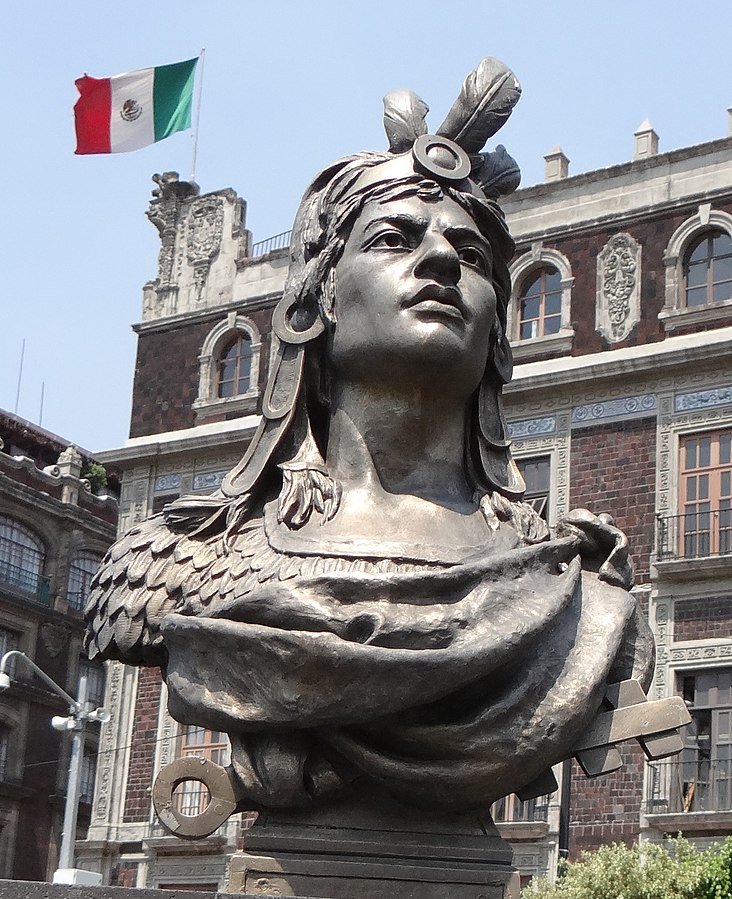
Cuauhtemoc, the last Aztec emperor, ruled only from 1520 to 1521. This was due to the Spanish conquistadors already invading Tenochtitlan, at the same time that the smallpox epidemic also began spreading.
His rule was difficult because the Spanish conquerors established alliances with other cities. As they mounted a defense against the conquerors, only the Tlatelolcas remained loyal to the Aztecs. The colonizers captured Cuauhtemoc in 1521 while attempting to flee the city via Lake Texcoco. He and some of the nobles surrendered to Cortés, but when they failed to find the quantity of gold they expected, they tortured the emperor by broiling his bare feet over hot coals. He was baptized Fernando Cuauhtémotzín and continued to rule the Aztecs. However, Cortez invented a conspiracy to kill him and had Cuauhtemoc and other nobles executed in 1525.
Mexico honors Cuauhtemoc as the only Aztec emperor to survive the Spanish conquest and his face appears in Mexican banknotes and coins.